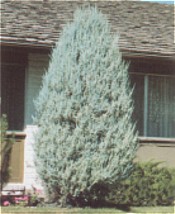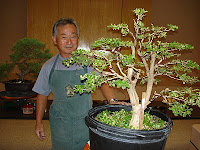
You might call it a dream
job-what’s it like spending your work day around bonsai?
Getting paid to do
what many of us do for free. Carmen Leskoviansky knows just what that’s
like!
She earned her Bachelor of Science in Horticulture
from Michigan State University,
and began working at Matthaei Botanical Gardens and Nichols
Arboretum in 2009.
Carmen oversees the care of the orchid and bonsai
collections as well as the
Gateway and Medicinal Gardens.
Here are her responses to a few
questions:
Yes and yes! I have a bachelors degree in horticulture from Michigan State University, and I've always been a plant person. My parents had a little garden near the chicken coop that they split between me and my brother. Each year, we'd go to the greenhouse and were allowed to buy a flat of whatever we wanted to grow. It helped that we had some acreage and that my parents were avid gardeners. I had lots of time to play outside in the woods, help in the garden, and learn about plants and nature.
2. Before you came to Ann Arbor, had you any experience with bonsai?
I had no experience with bonsai when I started here besides seeing them on display at a few botanical gardens. At first, my role with the trees was keeping them healthy and alive - fertilizing, watering - and managing the volunteers who did most of the design work. Over time, I began learning more about styling and got more involved with all the aspects of bonsai. My official job has shifted over that time from caring for many collections and garden spaces to now focusing on the bonsai collection.
3. Who is the bonsai person who you've found most interesting or helpful?
There are so many people who have influenced me! Connie Crancer, the horticulturist who took care of the bonsai before me, was my first teacher. She taught me watering, fertilizing, and helped me through some of my first pruning and wiring exercises. Since then, a number of the volunteers I work with here at the gardens have been very influential in my bonsai education - Jack Wikle, Paul Kulesa, and Cyril Grum - to name a few. This year, I started studying with Michael Hagedorn, and I will say that his teaching has very much influenced how I look at trees as well as the quality of my work. He is a thoughtful teacher, and I really connect with the way he styles his trees.
4. Do you have a favorite species to work with? Or a species you dread?
 This is a really tricky question. Each species offers something different. I tend to gravitate towards deciduous and flowering species. I think it comes from all the time I've spent in the woods. I'm familiar with these trees, and they remind me of my childhood. Here in Michigan, we don't have a lot of the same dramatic conifers you see out west. Though, I do really enjoy working on white cedar and larch - two conifers native to Michigan
This is a really tricky question. Each species offers something different. I tend to gravitate towards deciduous and flowering species. I think it comes from all the time I've spent in the woods. I'm familiar with these trees, and they remind me of my childhood. Here in Michigan, we don't have a lot of the same dramatic conifers you see out west. Though, I do really enjoy working on white cedar and larch - two conifers native to Michigan

























